WIPO: New version of Nice Classification (11th Edition) to come into force.
Copyright Office Introduces Non-Tax Receipt Portal (NTRP) for E-filing.
Draft Occupational Safety, Health and Working Conditions – Maximum 48 working hours in week.
Identical Packaging Infringement India-Future Group restrained.
RTI India & Right to Privacy: Saket S Gokhale v. UoI.
Vehicle Scrappage Policy.
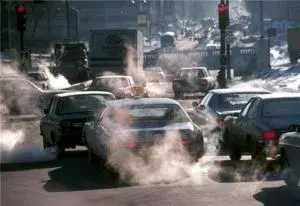
The rising air pollution in the major cities of the country is a major health and environment concern with 65% of total air pollution caused by older commercial vehicles plying on road. To arrest this issue, the Ministry of Road Transport and Highways is slated to scrap vehicles older than 20 years under the vehicle scrappage policy or voluntary vehicle fleet modernization program, first mooted in 2016.
A scrappage policy is a government-funded programme to promote the replacement of old vehicles with modern ones. A vehicle scrappage programme is usually intended to stimulate the automotive industry as well as taking obsolete and more polluting vehicles off the road.
It proposes to remove old commercial vehicles off the road and moot creation of an ecosystem to promote scrapping and recycling.
The policy is expected to considerably impact environmental sustainability and give thrust to automobile sector by creating new demand. The policy can be viewed as an extension of NGT ruling for Delhi-NCR whereby diesel vehicles older than 10 years were ordered to stop plying on the road. Similar policies have been implemented in countries like US, UK, China, Indonesia etc. to drive auto industry and reduce pollution.
Key Provisions of Draft Policy:
- Rebates on road tax and registration fees on new car will be given upon showing certificate of scrapping by the vehicle owner.
- Vehicle scrapping centres will be set up across the country.
For example, Mahindra has announced partnership with Metal Scrap Trade Corporation Ltd (MSTC) and set up scrappage centres called Mahindra Accelo which is the first government authorised scrappage centre in the country.
- Vehicles can be offered for scrapping if they are –
- impounded or abandoned by enforcement agencies,
- beyond repair,
- registration certificate has not been renewed (15 years’ time period)
- damaged due to fire, natural calamity, etc.
- An authorized vehicle scrapping facility –
- Should meet the minimum technical requirements for collection and dismantling centres specified as per the guidelines issued by the Central Pollution Control Board.
- Must have ‘competent manpower’ to carry out dismantling activities, keeping in mind responsibilities towards the environment.
- Need to take no objection certificate from State Pollution Control Board within six months since the beginning of operations, according to the draft guidelines.
- Must install CCTV cameras which can be audited by government authorities to check compliance with guidelines.
- Vehicles cannot be scrapped till fuel, oil and other gases are drained and collected as per in certified containers.
- A separate record of scrapped vehicles will also have to be registered in the National Register for Vehicles (VAHAN), which has to be maintained by the Centre.
- The auto industry agreed to the Centre’s proposal to offer a 1% discount on buying new vehicles if along with it an old one is junked.
- The government proposed renewal of fitness certificates for vehicles older than 15 years every six months instead of the current one year.
- The scrapping certificate will be transferrable and will also facilitate discounts on the purchase of new vehicles.
- The hike in registration fees for vehicles older than 15 years will increase to INR 15,000 from the current INR 600 and re-registration fee for such vehicles will be hiked to INR 40,000 from the current INR 1,500.
Benefits:
- For Government coffers: The proposal is proposed to boost tax revenues to the tune of INR 10,000 crores from the automobile sector.
- Containing oil Imports: Scrapping old vehicles is expected to reduce oil consumption by 3.2 billion litres per year saving nearly INR 7,000 crore in oil import.
- Alignment with Make in India: It would result in growth of automobile industry at an annual rate of 22% making India a hub for automobile manufacturing.
- Competition in Automobile Industry: The competitiveness of automobile industry is expected to improve as factor costs are expected to reduce with the easy and cheap availability of scrap metal for forging auto parts.
- Curb air pollution: Withdrawing old vehicles non-compliant with BS-I and BS-II standards from the road would reduce air pollution in cities.
- For the steel industry: The policy will help in the revival of India’s steel industry by generating fresh demand and lower steel imports.
Concerns by Niti Aayog:
- Concerns over the definition of the life or age of a vehicle may result in an economic loss for the vehicle owner due to scrapping the vehicle.
- It is feared that India may face the same fate as the US after it implemented the Cash for Clunkers scheme that used to provide financial incentives to car owners but even after spending $3 billion, it failed to stimulate.
The vehicle scrappage policy aligns with other initiatives of the central and state government which aims to reduce vehicular pollution by promoting use of clean alternative fuels, promotion of hybrid electric vehicles (FAME) and advancing the adoption of BS VI stage emission standards for vehicles. The proposed policy will have no effect on Electric Vehicles though, as for Electric Vehicles there is a separate Electric Vehicle Scrappage Policy that was introduced by the Delhi State Government in 2019. In principle, the Delhi EV policy aims to register 5,00,000 electric vehicles in the city by 2024, driven by a flurry of incentives offered by the state government through its newly incorporated ‘State EV Fund’ as well as the State Electric Vehicle Board, which will be chaired by the transport minister, Mr. Kailash Gahlot.
The Delhi EV policy has in store a scheme for offering various incentives to prospective customers a summary of the same can be found below –
- Electric two-wheelers – up to Rs 30,000 incentive from the state government
- Electric passenger vehicles – up to Rs 1,50,000
- Auto-rickshaws – up to Rs 30,000
- E-rickshaws – up to Rs 30,000
- E-goods carriers – up to Rs 30,000
Endnotes:
- https://www.businesstoday.in/sectors/auto/scrappage-policy-carmakers-agree-to-give-1-discount-on-new-vehicles-if-old-one-junked/story/420926.html
- https://auto.hindustantimes.com/
- https://www.businessinsider.in/business/auto/news/india-may-announce-vehicle-scrappage-policy-soon-and-this-is-what-it-means-for-consumers-and-new-buyers/articleshow/79041346.cms
- https://neostencil.com/vehicle-scrappage-policy
- https://www.news18.com/news/auto/cabinet-note-formulated-for-vehicle-scrappage-policy-in-india-likely-to-come-into-effect-soon-3040649.html
- https://www.jatinverma.org/scrappage-policy-hits-another-roadblock-after-niti-flags-issues
- https://www.autocarindia.com/car-news/delhi-government-notifies-ev-policy-418241
Read more about similar articles over Corporate Laws Articles
WIPO: New version of Nice Classification (11th Edition) to come into force.
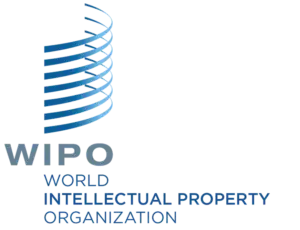
A new version of the eleventh edition of the International Classification of Goods and Services for the Purposes of the Registration of Marks (“Nice Classification”) will enter into force on January 1, 2021.[1] The 2021 version of the eleventh edition of the Nice Classification includes a number of changes compared to the previous version.[2] This information was put forth in the World Intellectual Property Organization (‘WIPO’) Notification No. 72/2020 dated November 24, 2020.
What is the Nice Agreement?
The Nice Agreement establishes a classification of goods and services with the objective of registering trademarks and service marks in mind. The trademark offices of Contracting States must indicate, in official documents and publications in connection with each registration, the numbers of the classes of the Classification to which the goods or services for which the mark is registered belong.[3]
A summary of the agreement can be found here to know more about summary aggrement. There are a total of 86 contracting parties to the agreement with India being one of them.[4]
Changes in the 2021 version
The International Bureau of WIPO will apply the 2021 version of the eleventh edition of the Nice Classification in two ways. Firstly, any application for international registration that is received by the Office of origin on or after January 1, 2021. Secondly, any application for international registration that is received by the International Bureau of WIPO on or after January 1, 2021, when the said application is received by the International Bureau of WIPO after the two-month time limit referred to in Article 3(4) of the Protocol Relating to the Madrid Agreement Concerning the International Registration of Marks.[5]
For all international registrations for which the list of goods and services has been classified according to the 2021 version of the eleventh edition of the Nice Classification, the International Bureau of WIPO will insert the abbreviation “NCL(11-2021)” next to the list of goods and services in the notifications sent to designated Contracting Parties, registration certificates and publications.[6]
The International Bureau of WIPO will not reclassify, in accordance with the 2021 version of the eleventh edition of the Nice Classification, the list of goods and services in international registrations with a date earlier than January 1, 2021.[7] Moreover, the Madrid Goods & Services Manager will be updated to reflect the changes introduced by the 2021 version.[8]
[1] https://www.wipo.int/classifications/nice/en/
[2] https://www.wipo.int/classifications/nice/nclpub/en/fr/pdf-download.pdf?lang=en&tab=class_headings&dateInForce=20210101
[3] https://www.wipo.int/treaties/en/classification/nice/
[4] https://wipolex.wipo.int/en/treaties/ShowResults?start_year=ANY&end_year=ANY&search_what=B&code=ALL&bo_id=10
[5] http://ip4all.com/entry-force-2021-version-eleventh-edition-nice-classification/
[6] https://www.wipo.int/classifications/nice/nclpub/en/fr/
[7] https://www.ipos.gov.sg/docs/default-source/resources-library/trade-marks/circulars/2020/tm-circular-no-7-of-2020.pdf
[8] https://webaccess.wipo.int/mgs/
Read more about intellectual property news over here
Copyright Office Introduces Non-Tax Receipt Portal (NTRP) for E-filing.
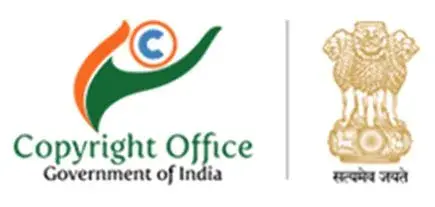
In a recent move, the Ministry of Commerce and Industry, DPIIT (Department of Industry and Promotion of Internal Trade), Copyright Office vide Public Notice dated November 20, 2020[i] has introduced Non-Tax Receipt Portal (NTRP) in the e-filing portal of Copyright Office w.e.f. November 23, 2020.
The aforesaid notice has been issued by the Copyright Office in pursuance of Centre’s direction mandating the collection of all Non-Tax Receipt across all the Departments/Ministries of Government of India through Non-Tax Receipt Portal (NTRP) vide OM No. MF-CGA/NTRP/2017-18/446 dated 03-07-2017 and circular No. MF-CGA/ITD-SPC/Software-Rollout/2017-18/1839-74 dated 13-11-2017.
Hence, now all the users would be required to use the new “Non-Tax Receipt Portal (NTRP) (Bharat Kosh)” payment gateway for making online payments.
An indicative user guide for the use of NTRP gateway has also been laid out by the Ministry to guide through the NTRP Payment Process.
The Office has also provided a
user guide enumerating the steps to be followed for the NTRP Payment Process:
Step 1: Verify the payment request details.
Step 2: Read the terms and conditions, check “I agree with the above Terms & Conditions” to proceed and select the “Make Payment” option.
Step 3: Choose a payment gateway from Net banking, Debit/Credit card, and UPI.
Step 4: Fill in the requisite payment details according to the chosen payment mode and click on “Pay Now”.
User Guide with all the Steps in detail can be accessed here to know more about Public Notice.
[i] https://copyright.gov.in/Documents/PublicNotice44_1.pdf
Read more about IP News over here
Draft Occupational Safety, Health and Working Conditions – Maximum 48 working hours in week.

Draft Occupational Safety, Health and Working Conditions – Maximum 48 working hours in a week
The Ministry of Labour and Employment on November 19, 2020 introduced the Draft Occupational Safety, Health, and Working Conditions (Central) Rules, 2020[1] (hereinafter referred to as ‘draft rules’) inviting objections and suggestions, if any, from the stakeholders. Objections and suggestions are required to be submitted within a period of 45 days from the date of notification of the draft rules.
The draft rules enumerate provisions relating to safety, health and working conditions of the different workmen including but not limited to Dock Workers, Building or other construction workers, Mines workers, Inter-State Migrant worker, Contract labour, Working journalist, Audio-visual workers and Sales promotion employees, etc.
The salient features of the draft rules include the following:
- Registration on Shram Suvidha Portal- Online registration of an establishment by an employer on the Shram Suvidha Portal can be done by submitting the prescribed form along with required documents. Accordingly, the Certificate of Registration shall be issued immediately subject to completion of documents. However, the same shall be not be issued after a period of 7 days from the date of submission of application. Any update in the records of an already registered establishment shall also be done on the Shram Suvidha Portal.
- Medical examination for every worker– Every employer of factory, dock, mine and building or other construction work shall arrange for a free of cost, medical examination for every worker, on an annual basis and within 120 days from the commencement of every calendar year. The eligible worker shall be the one who has completed 45 years of age.
- Issuance of Letter of appointment– No employee shall be employed in any establishment unless he has been issued a letter of appointment in the format as prescribed in the draft rules.
- Duties of an employer – If there has been death of an employee or an injury due to an accident in the establishment which is a factory, dock work, mines, building or other construction site, the employer has to mandatorily notify the authorities and family of the employee in the format as prescribed in the draft rules. The same shall be in the case of diseases as well.
- Duties of an employee – If an employee comes to know that of any unsafe or unhealthy condition in the establishment, he shall report to the employer, health and safety representative or safety officer or agent or manager in case of mine, as soon as practicable, electronically or in writing or telephonically.
- Rights of the employee – On receipt of information from the employee relating to the existence of an imminent danger to their safety and health, the employer shall take immediate remedial action in this regard. The employer, whether satisfied or not, shall send a report forthwith of such actions taken, to the relevant authorities electronically or by registered post or speed post.
- Appointment of a safety officer for advising and assisting in the fulfilment of its obligations, statutory, concerning prevention of personal injuries and maintaining a safe working environment.
- Working hours:
- No worker shall be required or allowed to work in an establishment for more than forty-eight hours in any week.
- The period of work of a worker shall be so arranged that inclusive of his intervals for rest, shall not spread over for more than twelve hours in a day.
- The period of works of workers shall not exceed five hours and that no worker shall work for more than five hours before he has had an interval for rest of at least half an hour.
- Working hours of working journalist: The provisions of the draft shall apply to working journalist but not apply to editors, or to correspondents, reporters or news photographers. Additionally, the number of hours which shall constitute a normal working day for a working journalist excluding the time for meals shall exceed 6 hours per day in the case of a day shift and five and a half hours per day in the case of a night shift and no working journalist shall ordinarily be required or allowed to work for longer than the number of hours constituting a normal working day. Quarantine leave on full wages shall also be granted by the newspaper establishment on the certificate of the authorized medical practitioner.
- Proper Display of Establishment details- Every employer be mandatorily required to display at the conspicuous place of the workplace of the establishment, notice showing the details including but not limited to, name and address of the establishment, hours of work, wage period, date of payment of such wages, details of accident and dangerous occurrence in the establishment for the last five years, name and address of the such authority having jurisdiction to such establishment and date of payment of unpaid wages to such workers in English, Hindi and in the Local Language understood by the majority of the workers.
- The draft rules also cover the eligibility, qualifications and conditions for issuance, revocation, renewal and suspension of license to a contract labour.
In view of the above mentioned salient features of the draft rules, it is pertinent to mention that the said rules can bring radical and significant changes in the existing framework of work management of workers. Specific inclusion of mine workers, journalists, inter-state migrants and audio visual workers provides protection against exploitation of the workers especially looking into the atrocities which have been borne by them during the COVID 19 pandemic. However, it would be rather interesting to witness the suggestions and comments received from the stakeholders and their say regarding the draft rules.
[1] https://labour.gov.in/sites/default/files/OSH_Rules.pdf
Read more about news related to Corporate Law over here
Identical Packaging Infringement India-Future Group restrained.
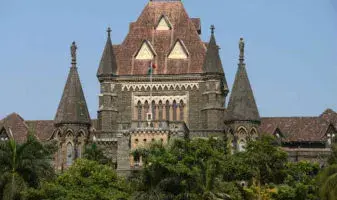
By Lucy Rana and Bijit Das
Recently, Parle Products Pvt. Ltd. filed a civil suit against Future Group Ltd. alleging identical packaging infringement of Plaintiffs copyright combined with a cause of action for passing off, wherein it was found that the latter’s products had identical/deceptively similar in packaging to that of Parle’s products.
In the present case, Bombay High Court restrained, Future Consumer Ltd. (hereinafter referred to as ‘the Defendant’) from infringing Parle’s trademark in terms of the packaging of its products vide passing an ad-interim injunction order.
The Court held that “There is no doubt that the rival labels are being used for identical products under nearly identical packaging and trade dresses. The similarity in the rival packaging/labels cannot be a matter of coincidence.”
Brief Facts
- Parle Products Pvt. Ltd. (herein referred to as the ‘Plaintiff’) is the most chosen Fast-Moving Consumer Goods (FMCG) brand since 2010. Plaintiff manufactures and sells a range of biscuits however not limited to confectioneries, cakes, wafers, etc.
- In the years 1939, 1971, and 1996 the Plaintiff began manufacturing its popular biscuits – “MONACO”, “KRACKJACK” and “HIDE&SEEK” respectively.
- Ever since, To secure its statutory rights in the “MONACO”, “KRACKJACK” and “HIDE & SEEK” trademark the Plaintiff had applied for and secured trademark registration in respect of the same under the Trade Marks Act, 1999.
- In the months of July 2013, July 2014, and May 2017, the Plaintiff redesigned and created latest packaging for “MONACO”, “KRACKJACK” and “HIDE&SEEK”, respectively.
- Further, it was disclosed that the Plaintiff’s packaging was created/authored by Mr. Mayank Shah an employee of Plaintiff during his course of employment. Therefore, Plaintiff is the owner of the copyright in the packaging.
- In and around the second week of September 2020, Plaintiff came across the Defendants, biscuits bearing the mark “CRACKO”, “KRACKER KING” and “PEEK-A-BOO” having trade dresses/packaging/labels which were identical with and/or deceptively similar to and/or substantial reproduction of Plaintiff’s Packaging.
Issues Involved
After having found Defendant’s impugned products, Plaintiff produced photographs of Defendant’s impugned products “CRACKO”, “KRACKER KING”, & “PEEK-A-BOO” which were identical/deceptively similar to Plaintiff’s products “MONACO”, “KRACKJACK”, and “HIDE AND SEEK” with a cash memo of sale of the impugned products in Big Bazaar outlet in Ville Parle, Mumbai.
The aforementioned findings resulted in the formation of the following issues before the Bombay High Court:
- Whether the Plaintiffs are the owners of Copyright in Plaintiff’s packaging of their products “MONACO”, “KRACKJACK” and “HIDE & SEEK”?
- Whether the Defendants have blatantly copied the Plaintiff’s packaging and label concerning their aforementioned products?
Plaintiff’s Contentions
- It was submitted that according to the Nielsen Report for the year 2010 Plaintiff’s brand PARLE-G was certified as the world’s largest selling biscuit brand.
- It is stated that since the beginning, Plaintiff has been openly, continuously, and extensively using Plaintiffs’ Packaging, upon and in respect of their goods in India.
- It is also stated that Plaintiff has taken efforts to popularize their products bearing its Packaging and have been expending substantial sums of money and efforts towards popularizing and promoting sales of the relevant goods in India.
- It was submitted that its Packaging includes the features thereof that have become distinctive of its goods and connote and denote to the members of the general public and trade the goods of Plaintiff alone and no one else.
- It was argued that the Defendants have intentionally stocked their impugned products on the shelves alongside Plaintiffs’ products
- It was contended that the Defendants had copied every element of Plaintiffs’ Packaging including the layout, color combination, placement, and all distinctive elements and features of Plaintiffs’ Packaging to the last millimeter.
- He further submitted that Defendant’s usage of Plaintiff’s trade dresses, labels, and packaging amounted to an infringement of Plaintiff’s copyrights and passing off.
Comparison between the two goods are reproduced below:
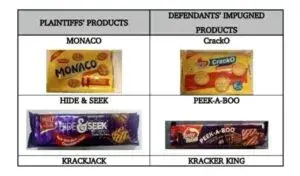

Identical Packaging Infringement- Similarity in rival packaging cannot be coincidence
- It was noted by the Hon’ble Bombay High Court (hereinafter referred to as ‘the Court’) that a comparison of the rival products hardly leaves any doubt about how Defendants have blatantly copied Plaintiffs’ Packaging/labels. There is no doubt that the rival labels are being used for identical products under nearly identical packaging and trade dresses. The labels/artworks/packaging/trade dresses of Defendants’ “CrackO”, “Kracker King” and “Peek-a-Boo” products are a reproduction of Plaintiffs’ Packaging used in respect of their “MONACO”, “KRACKJACK” and “HIDE & SEEK” products and/or reproductions of substantial parts thereof. Defendants must have had Plaintiffs’ products before them while designing the impugned packaging. The similarity in the rival packaging/labels cannot be a matter of coincidence.
- The Court held that there were prima facie evidences that the Plaintiffs were the original owners of copyrights on the packaging of their products through which their brand Parle has gained substantial value in terms of reputation and goodwill.
- With regards to the findings, Bombay High Court passed an ad-interim injunction order restraining the Defendants from reproducing, manufacturing, selling its products which are identical or deceptively similar to that of Plaintiff’s products’ packaging, labelling, trade dress, layout or color scheme to pass off their impugned products as the Plaintiff’s products.
Related Posts
RTI India & Right to Privacy: Saket S Gokhale v. UoI.

By Bijit Das and Isheta Srivastava
The Bombay High Court in a recent case (Saket S. Gokhale v The Union of India) relating to Right to Information RTI in India has held that ‘If such large scale breaches in the field of Right to Information are not taken seriously, the right itself will be trivialized. Suitable action must be taken, and also seen to be taken, to underscore the importance of the Right to Information Act, 2005.’
The issue in the case was related to the personal details of 4474 RTI applicants being uploaded on the official website of the Ministry of Information & Broadcasting leading to a massive breach.
Brief Facts
- Saket S. Gokhale (hereinafter referred to as ‘the Petitioner’) on October 27, 2019, filed a Right to Information (RTI) application with the Ministry of Youth and Sports Affairs, Govt. of India seeking details regarding a campaign launched by the Government of India.
- On November 27, 2019, the Ministry of Youth and Sports Affairs transferred the application of the Petitioner to the Ministry of Information and Broadcasting.
- The Petitioner had instituted court proceedings on some sensitive social issues. Petitioner started received phone calls and threatening messages on his phone. A mob gathered outside his residence chanting slogans.
- The Petitioner noticed that its RTI application was uploaded to the website of the Respondent with his contact details and address publicly displayed.
- Further, since the website link of the Ministry of Information and Broadcasting (hereinafter referred to as ‘the Respondent’) was accessed by internet search engines, the Petitioner’s details were freely available on the internet.
- On August 3, 2020, a petition was filed for a direction that the Petitioner’s details be removed from the website of the Ministry of Information and Broadcasting.
In a reply affidavit filed by the Respondent, it was stated that the Petitioner’s data was removed from the website from August 1, 2020.
- The action of the Respondent in violating the fundamental right to privacy of the Petitioner guaranteed under Article 21 of the Constitution of India has put the life, liberty, and safety of the Petitioner and his family in great jeopardy.
- By way of the Writ Petition under Article 226 of the Constitution of India, the Petitioner sought the issuance of a writ of certiorari or any other appropriate writ to order the Respondent to remove the personal data of the petitioner from its website for violating the fundamental right to privacy guaranteed under Article 21 of the Constitution of India and to award compensation for the immense distress, agony, and personal risk faced by the petitioner due to the violation of his fundamental rights by the respondent.
Contentions of the Petitioner:
- It contended that though its personal details were stated to be removed on August 1, 2020, the details continued to be on the website till September 14, 2020.
- It was submitted that because his personal details were uploaded by the Respondent in the public domain, it was accessed by antisocial elements who threatened him causing harassment and trauma.
- It alleged that despite office memorandums the Respondent has uploaded the personal details singling him out because he has taken up various sensitive social causes.
Contention of the Respondent:
- It submitted that it is not the case that the Petitioner has been singled out, as it has uploaded 4,474 applications with personal details.
- On the specific query whether personal details of all 4,474 applicants were displayed on the website, the Respondent confirmed that it was so and the applications with all personal details were uploaded.
- It pointed out that the letter dated July 31, 2020, whereby it had informed the Senior Technical Director, National Informatics Centre, to remove the personal details of the applicants. It further submitted there was an error on the part of the Respondent and there is no malice or motive to put up the personal details of the Petitioner alone to harass him.
RTI India- Personal Details of Applicants in Public Domain defeats Object of RTI Act
It was noted by the Court that despite office memorandum dated October 7, 2016, till August 1, 2020, 4,474 applications filed under the RTI Act in India with personal details of the applicants were uploaded on the website of the Respondent.
The Court held that it may not be that the petitioner is singled out, but the reason why it so makes the matter more serious. The Respondents cannot seek dismissal of the writ petition contending that the petitioner is not the only victim of an irregularity, more particularly when the breach is regarding an enactment which is an essential component of a working democracy.
The Court refuted the contention of the Respondent that it was not aware of the Official Memorandum dated October 7, 2016, and when it became aware, it took suitable action.
It held that this response was vague. There is no such general concept of awareness of a government department. Either the government department receives an official communication, or it was not received. The stand that Respondent Ministry was not aware of the Memorandums is not specific.
On the issue of RTI in India, the Court stated that as the statement of objects and reasons of the Act indicates it was enacted to set up a practical regime of right to promote transparency and accountability in the working of every public authority. Citizen actions and transparency are vital for the functioning of the democracy, to contain corruption and to hold Governments and their instrumentalities accountable to the governed, The Act also balances competing goals and interests. It is acknowledged that the revelation of information in actual practice may conflict with efficient operations of the Governments, limited financial resources and the need for confidentiality of sensitive information. The Right to Information Act is, therefore, a unique and vital piece of legislation.
The Court strongly held that the issue also travels beyond the individual breach of the privacy of the applicant and the potential likelihood of a risk. It is the impact on future applicants. Informed citizenry and transparency of information are vital for the functioning of democracy. Noticing that personal details of other applicants are put up in the public domain, some of those who want to seek information for the larger good may be deterred for the fear of being targeted. This could defeat the object of the RTI Act in India. If such large scale breaches in the field of Right to Information are not taken seriously, the right itself will be trivialized. Suitable action must be taken, and also seen to be taken, to underscore the importance of the Act of 2005.
It further held that despite the office memorandum dated October 7, 2016, for four years, 4,474 applications with personal details of the applicants were uploaded on the website of the Respondent. Looking at the magnitude of the lapse, it cannot be treated as just a routine internal matter. We, therefore, intend to place the responsibility of ensuring that necessary inquiry is conducted and that too in a time-bound manner upon the highest official in the Ministry, the Secretary. Needless to state that if the inquiry will result in punitive action against the guilty government servants it would follow the applicable Rules and Regulations.
Related Posts
Right to Information against Confidential/ Copyrighted Information
India: Right to Privacy: The Next Step Supreme Court on Data Privacy on Social Media


